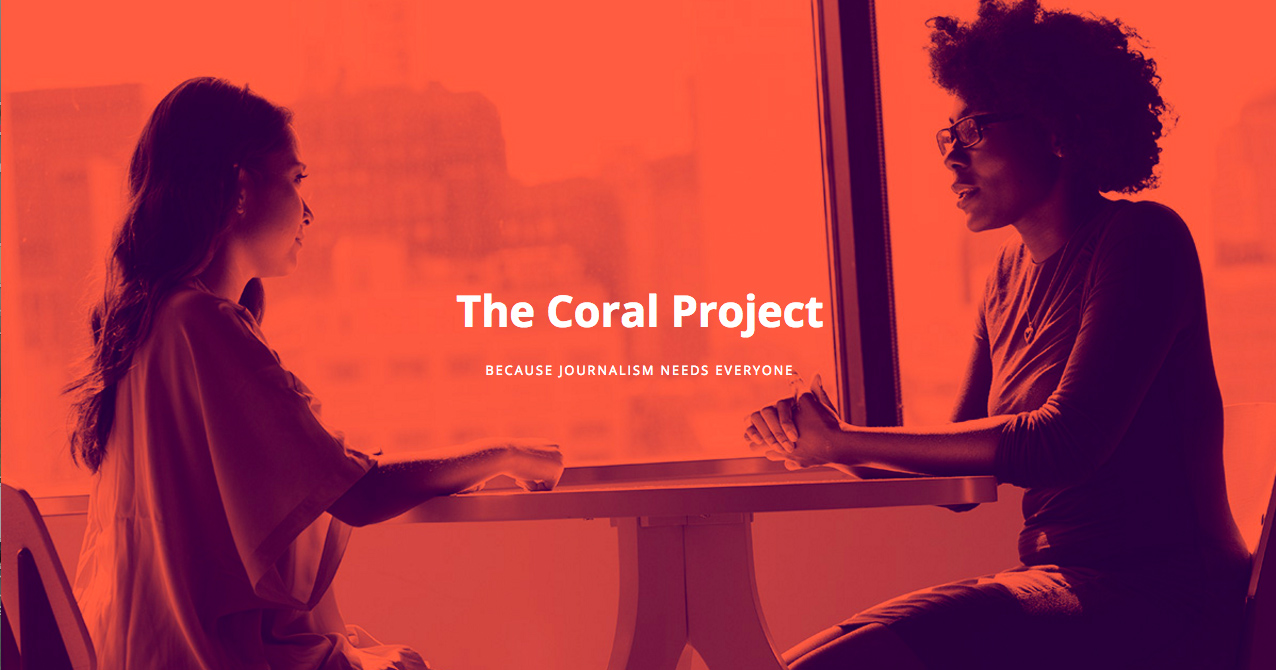For a lot of news organizations, the comment section is an afterthought or something to be avoided altogether. The Coral Project wants to change that.
The organization — a collaborative effort of the Mozilla Foundation, The New York Times and The Washington Post — launched a new product Thursday aimed at giving news publishers a guide for creating and caring for online communities. The aptly titled “Guides” includes about 70 different how-tos, resources and case studies from media professionals around the world that detail everything from executing audience strategies to using metrics tools.
“We’re really trying to create a comprehensive series for anybody at any stage of community journalism,” said Andrew Losowsky, project lead for The Coral Project.
Guides joins the rest of The Coral Project’s suite of free, open-source products, including the “Ask” and “Talk” software. The former is a tool to help gather user-generated content, while the latter is a highly customizable discussion space for online communities.
Related Training: How to Build and Engage Your Audience: Taking a New Approach with Analytics
The organization already recommended best practices for building communities on its blog, creating an entirely separate product was in many ways a natural extension of that.
“This has always been a big part of what we need to do to help people,” Losowsky said. “The software are the tools, but you still need to use them effectively.”
The idea for Guides came about after The Coral Project — which is funded by a grant from the John S. and James L. Knight Foundation (which also funds Poynter) — conducted extensive user research with more than 350 people in more than 150 newsrooms scattered across 30 countries about how they think about creating engaging online communities.
It wasn’t pretty.
“What we learned very quickly is there is a real lack of training and understanding about what community journalism actually looks like,” Losowsky said. “We saw very early that there was definitely a need for this.”
Most newsrooms were using social media as their primary method of communicating with their audiences, but they didn’t know how else to do so, he said. That’s where Guides comes in.
To create the website, The Coral Project drew upon the knowledge of journalists and other industry experts around the world. According to the site, one thing every newsroom needs to do — which is detailed in the first module — is ask itself six questions:
- What is your mission?
- Who do you serve?
- What is the role of the people you serve in your mission?
- What are your biggest obstacles to achieving your mission?
- How could the people you serve help you overcome these obstacles?
- How can you track the progress of each of these areas?
“If you can answer those six questions, then you’re in really good shape,” Losowsky said. “If you can’t answer these questions, then you are not ready to start deploying new software or bring in somebody new.”
At the top of Losowksy’s list of stellar community engagement efforts was The Washington Post’s Capital Weather Gang section, a weather blog that has a variety of different contributors.
“They have a fantastically engaged community,” he said. “Some of the people who write for the blog have been hired … they are training their community to become citizen journalists to support their reporting.”
And as for any potential trolls, Losowsky said users quickly shut them down in the comments. He also mentioned both ProPublica and Washington Post reporter David Fahrenthold’s crowd-sourcing methods as key ways journalists can interact with their audience in meaningful ways.
But beyond informing journalists how to improve their use of online discussion spaces, a broader goal of the Guides product is to dispel common misconceptions about audience engagement.
“I think one of the biggest misunderstandings is that audience engagement means marketing on social media — that audience engagement is something you do at the end,” Losowsky said. “That is fundamentally misunderstanding the potential of communities and the future of journalism itself.”
To Losowsky, the future of the media industry comes down to four key problems:
- Making people care about the work journalists do
- Building a relationship with audience, as well as profitability and revenue models
- Diversity of voices in coverage and newsrooms
- Trust
And he thinks creating better online communities will help solve them.
“Trust is about an ongoing relationship,” Losowsky said. “If we continue to keep the audience at an arm’s length, if we believe that they are passive consumers to pass over cash … then I really believe journalism will continue to fade away from people’s minds.







